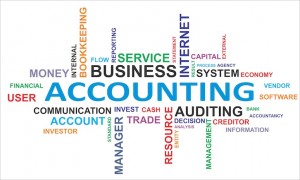
Over the past four to five years cloud accounting has been universally adopted by all the major and minor accounting firms. There are so many practical reasons for keeping business in the cloud as I have discussed in previous articles. In the beginning, when accounting software began its transition into the cloud, most thought it would be a limo ride to ease and affordability. However, some of the simple basics turned out to be hurdles that needed to be overcome. Cloud implementation presented several fundamental challenges that weren’t being met, such as journal entries and reconciliations. These basics have long since been cleared up, and are no longer a consideration. But it just goes to show you that even the simple things can take more attention that initially realized.
Since different software packages are constantly being offered, and the next is better than the last, it’s important to stay abreast of all new possibilities. However, making decisions to change or add accounting software can be difficult, especially taking into consideration all the additional work that’s involved in transferring data and then, of course, learning the new system. The risk in such a high velocity world of commerce is that software can become outdated relatively quickly. So staying aware can be a full time job – without the billable hours that are intrinsic to it – in and of itself.
To make this transition less of a hassle:
Bite the Bullet
I know this isn’t very comforting, but the fact is if you resist the change it will be even harder on you and your staff. Take this one step at a time, go through these steps methodically and implement them in order. Don’t push too hard to meet unrealistic deadlines since this will add pressure and stress to an already unsettling situation.
Keeping a Timeline
With the bite the bullet frame of mind in place remember to give your self a timeline to follow. Being organized with a comprehensive list of action items given to staff members to be completed by certain times and dates. Meet regularly either individually or in teams to discuss the milestones to be reached. This helps to eliminate any surprises and keeps the staff working as a unit. You’ll know what to expect. Having a timeline also gives you the ability to manage work for clients without them being inconvenienced, or even aware of your firm’s internal mechanics.
Use Help
The software provider’s AE is skilled in answering questions and clearing a path to technical support for those times that no matter what you’ve tried the next step seems maddeningly elusive. The account executive representing the software company you purchased the product from is very familiar with the process of transitioning to a new and different software. Every firm has it’s own set of unique challenges, but he or she can help, and it’s important to take full advantage of this resource. They will assist you in setting up a work schedule that fits your company’s needs along with making sure you are happy with your new acquisition.
Switching software packages may not be on your top ten list of fun things to do, but implementing the above suggestions will help make the process move along more smoothly. Remember as soon as you have the new system up and running version X.X will be looming on the horizon and you new mega client will insists on your firm using that one. Stop the madness! Not likely anytime, soon.
Leave a comment below. What’s been your experience with switching and upgrading accounting software products?